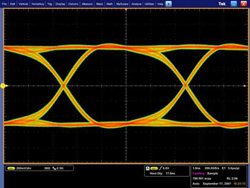 For a while, each visit I made to America was preceeded by a delivery of fine Cuban cigars. In a very Bond-like arrangement, I was to take these with me ‘for personal use’ and deliver them to an American whom we shall call Steve.
For a while, each visit I made to America was preceeded by a delivery of fine Cuban cigars. In a very Bond-like arrangement, I was to take these with me ‘for personal use’ and deliver them to an American whom we shall call Steve.
It was quite legal but it had an enjoyable air of opulence and sedition... and it was intimately tied in with cutting-edge digital audio.
This was at a time when converting audio between the analogue and digital worlds was as exciting as it was fraught. Seasoned audio commentator Barry Fox had locked horns with the highly-regarded classical recording company Deutsche Grammophon over its use of the term ‘4D’ to describe the conversion strategy it had developed with Yamaha for its CD releases. And we were all coming to terms with jitter, dither, oversampling and ‘eye diagrams’ for the first time.
Steve was one of the champions of ‘fast-and-wide’ conversion (using high sample rates and plenty of bits), arguing that it was an essential part of retaining quality and options when archiving recordings in the digital domain. He called is, simply, 'archival'. He also loved Cuban cigars, but his government’s trade embargo against Cuba had kept them out of reach since the early 1960s. In fact, it is believed that JFK asked an aide to bring him 1,000 Upmann cigars immediately before the 1962 embargo took effect…
Converting the crowd

In many respects, things haven’t gone too well since. Certainly, the pro audio industry has gained a vastly improved understanding of the importance of audio conversion and how to achieve it. But the consumer market is so ill-served that advertisements have described MP3 players as offering ‘CD quality’ sound.
Someone had evidently forgotten to tell the ad agency that MP3 is a process that was expressly designed to throw away some of CD’s 44.1kHz, 16-bit data in order to pack more music into those little boxes you can carry around to add the soundtrack of your choice to your daily commute. And consumers are now so conditioned to the poor quality of music-on-the-move systems that they don’t know what they’re missing.
Add to this the ‘download’ model of distribution, and you have a music industry that is making its product more disposable – not simply because it is moving on from tangible collections of vinyl with their own culture of artwork and sleeve notes, but because computer failures, new players and new delivery platforms all threaten to damage or destroy music collections in different ways.
While there are audiophile D/A converters costing thousands of dollars on the consumer market, it’s probably true to say that Steve was pretty astute in identifying archival applications as his target, for both altruistic and commercial reasons. Tied in with audio restoration systems – capable of ‘removing’ scratches, hiss and ambient noise from old recordings, as well as compensating for wear and misadjustment of the tape machines used to make them – high-quality converters are well appreciated here.
Tangled websites
In a further twist to the archival considerations of audio recordings, the websites of audio companies and the audio press are now presenting their own dilemma.
With website models and technology developing as quickly as those of early digital audio converters, renewing a website is a constant consideration. But this can often only be made at the cost of losing an on-line archive or having to rebuild it from the ground up. For equipment manufacturers, this may involve a library of manuals, options and technical documentation, while for contractors it might be equipment catalogues, systems models and case studies. For magazines, it is a back catalogue of published articles.
All are valuable in themselves and also contribute to a company’s visibility through search engines. A new website can readily represent a step backward as well as forward if archives are lost. The cost of rebuilding any of these archives can be considerable, but probably not as great as the cost of losing them.
Web archival – it could be another job for Steve…

